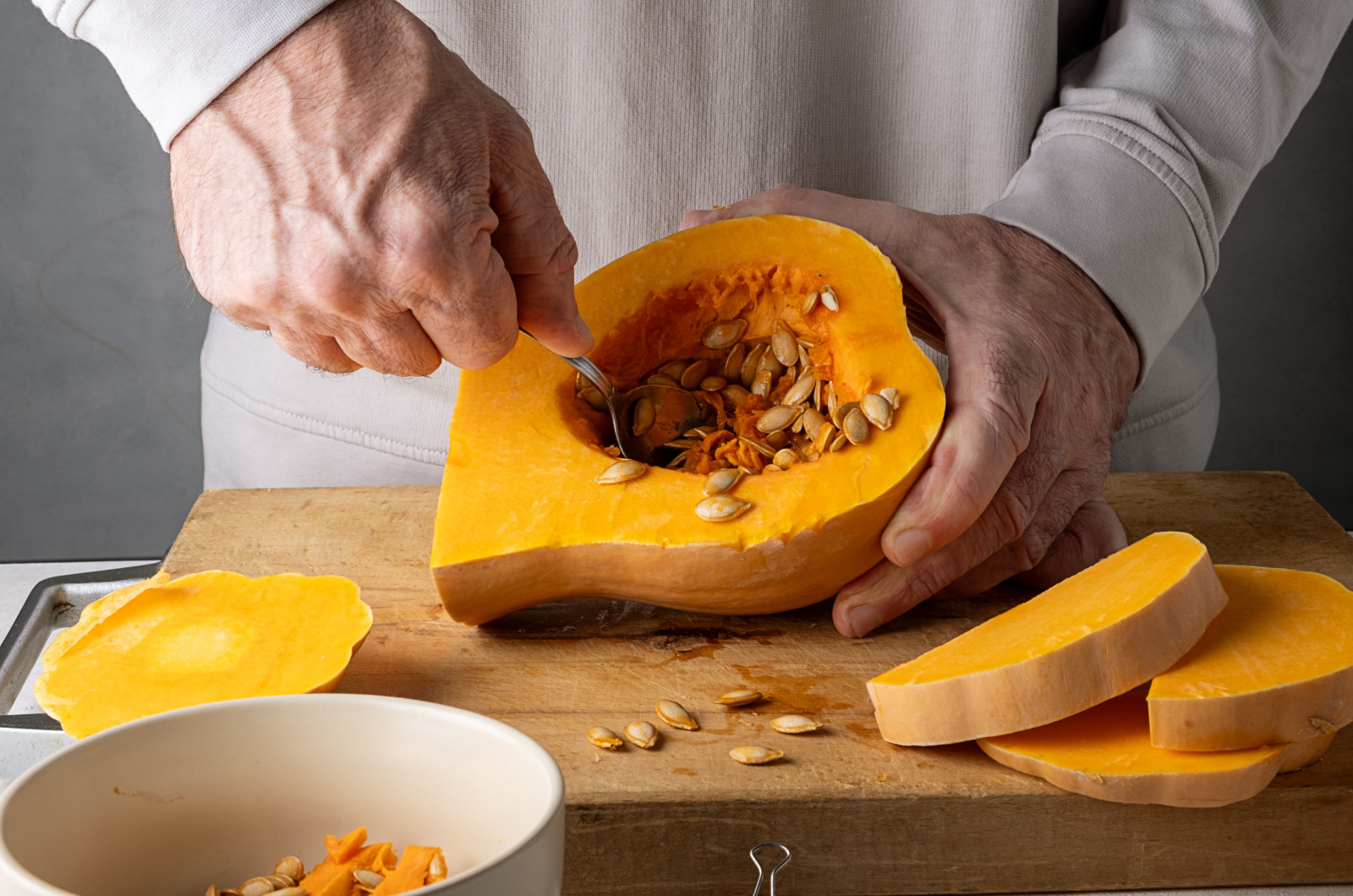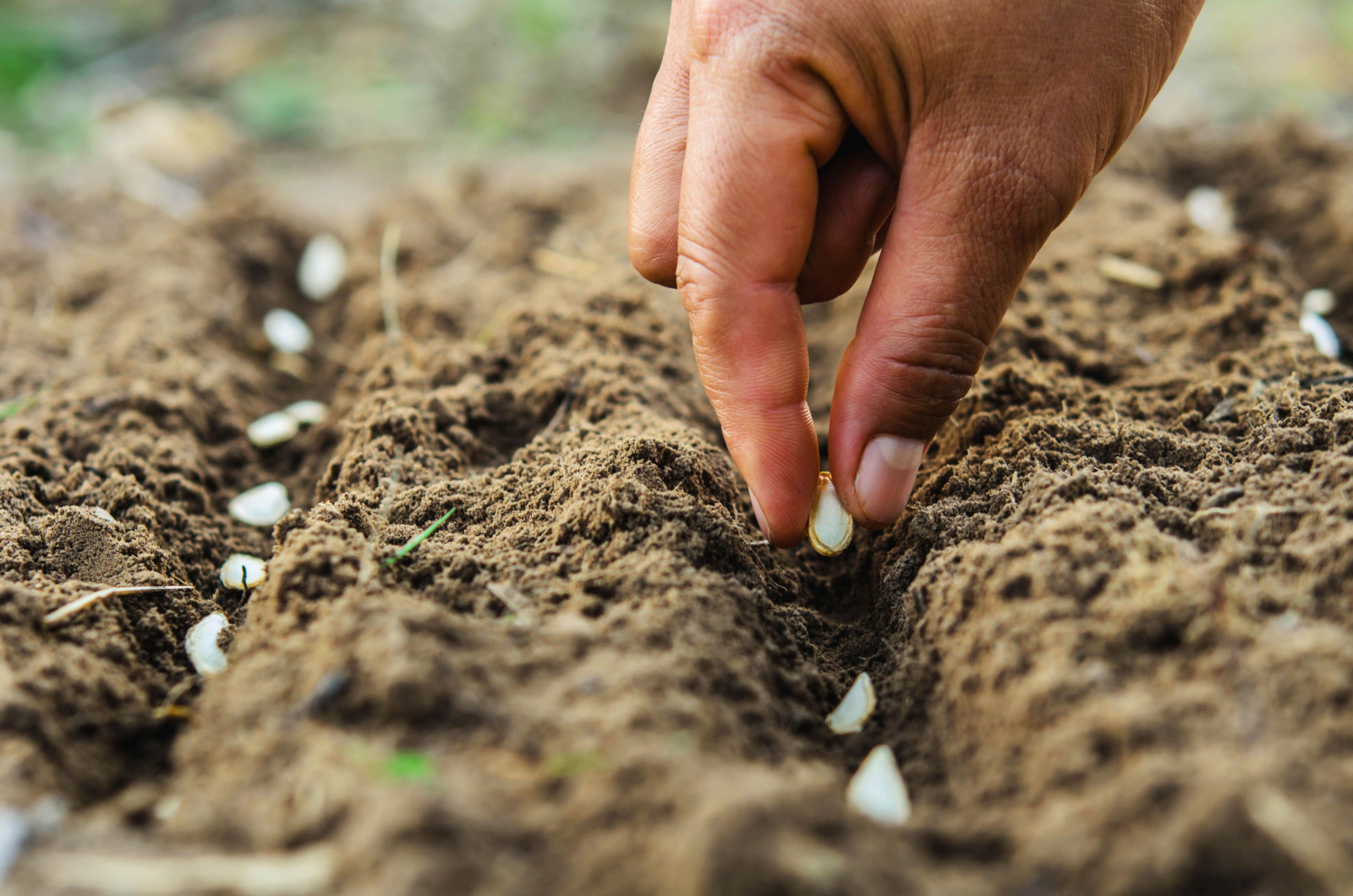Don’t toss those leftover pumpkin seeds!
If you are a fan of homegrown pumpkins, you can save and store your pumpkin seeds for planting next year. The perfect time to do this is right after Halloween – just look inside your jack-o-lantern and you’ll notice numerous seeds inside!
You can easily save those and plant them next season. But you can also choose specific varieties that are more suitable for growing in your area. It’s important to provide your new pumpkins with the best growing conditions.
Therefore, we will share some tips on how to save leftover pumpkin seeds, and also how to plant them properly next year. Let’s get started!
Harvest Seeds Adequately
Don’t worry, it’s super easy to harvest pumpkin seeds. Start by carving and hollowing out the pumpkin – take out the seeds and place them in a bowl. After removing the seeds, thoroughly wash them in a colander with cool water to remove all traces of pulp.
You can save as many seeds as you like for planting, but keep in mind that the largest seeds in the pile will often sprout and grow the fastest. You can use the rest for compost, to feed birds, or you can roast them and eat them as snacks!
After washing, spread the cleaned seeds out in a layer on a level baking sheet covered with wax paper. Leave them overnight so that they can dry properly. Then, you should put them on a paper towel so that it can absorb any moisture left.
It’s best to put the sheet in a cool, dry place for a month so that the seeds don’t get mold or mildew. Check to see if there are any damaged or moldy seeds left – if so, get rid of them. Put the rest of the seeds in a paper envelope until you need them for planting.
You can also keep them in a plastic container in the refrigerator; if you do this, make sure to cut holes in the top of the container to prevent condensation.
Also read: How Many Pumpkins Per Plant? Read On To Find Out The Answer
Plant Them Next Year
Once the spring arrives, it is time to plant those seeds!
Wait until the soil temperature is about 70 degrees Fahrenheit and make sure that the danger of frost has passed. If you live in a region with a longer winter season, you can start the pumpkin seeds indoors – simply plant the seeds in small peat pots (2-3 per pot).
Then, figure out which the strongest seedling is and plant it in the ground once it’s warm enough. Grow your pumpkins in fertile, well-draining soil with pH levels between 6.5. To 6.8.
You can even cover them with row covers for the first few weeks of growth to protect them from pests and other critters. Make sure to uncover them in early summer so that bees and other pollinators can reach them.
Consider adding some pumpkin companion plants like lavender or nasturtiums that will boost your pumpkins’ growth and attract pollinators.
Your pumpkins will be ready for harvesting in the fall. A deep orange shade and firm skin are signs of mature pumpkin (although color might vary based on the type of pumpkin you are growing).
Here’s what to expect during different pumpkin growing stages.



